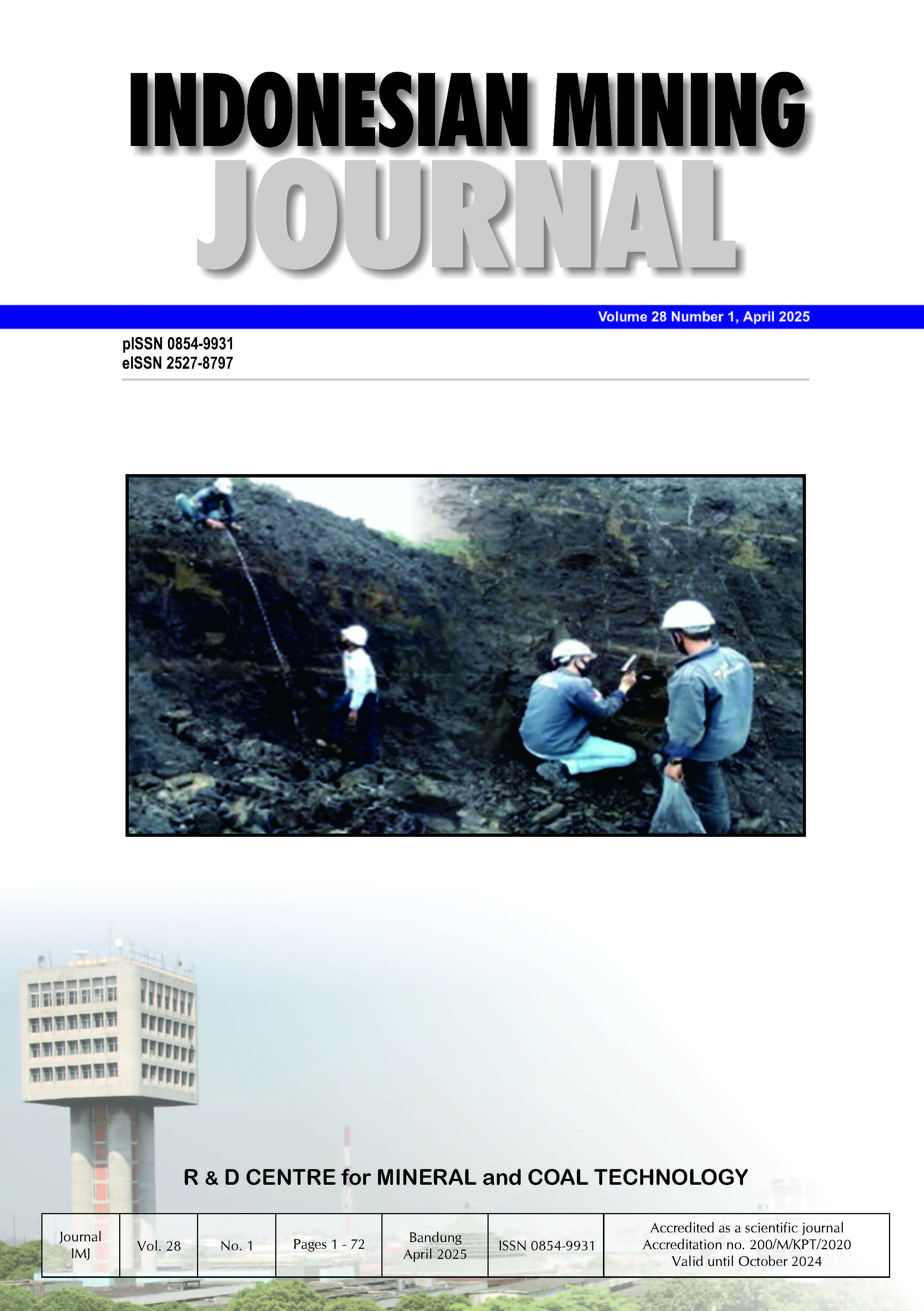Indexed by:

About the Journal
This Journal is published periodically two times annually : April and October, containing papers of research and development for mineral and coal, including exploration, exploitation, processing, utilization, environment, economics and policy. The editors only accept relevant papers with the substance of this publication.doi: 10.30556/imj
E-ISSN: 2527-8797
P-ISSN: 0854-9931
Accredited as a scientific journal based on: Decree of Director General of Research and Development Strengthening, Ministry of Research, Technology and Higher Education of the Republic of Indonesia No. 200/M/KPT/2020 Valid until Volume 27 Number 2 Year 2025
Current Issue

In this current issue, five papers are published focusing on 1) Comparative assessment of rock slope stability, 2) Landslide probability in pit dump area, 3) Distribution and correlation of critical minerals Pb-Zn skarn deposits, 4) The effect of hydrothermal process to increase low-rank coal quality, and 5) Technical and economic assessment of coal stockpile for environmental sustainability.
The analysis of rock slope stability is a critical aspect of geotechnical studies in mining engineering. Kinematic analysis is widely used to evaluate potential slope failures based on structural orientations; however, it often overlooks detailed structural property information. Since structural properties in rock slope engineering are highly interpretive, simplifications are commonly applied, which can reduce analytical accuracy and create ambiguous results. This study evaluates the influence of rock structural characteristics, such as heterogeneity, discontinuities, and anisotropy, on slope stability. The assessment was carried out using the limit equilibrium method (LEM) with a generalized anisotropic (GA) material model and compared with the finite element metod (FEM) employing the shear strength reduction (SSR) technique with a joint network rock mass model.
The next article talks about landslide probability in pit dump area. Open-pit mining requires careful planning of disposal areas to ensure stockpile stability, which is assessed through soil bearing and slope stability analysis. The study focused on ensuring stockpile stability in open-pit mining at the ASTIM In Pit Dump (IPD) through soil and slope stability analysis. At the ASTIM In Pit Dump (IPD), tests on actual materials were conducted and analyzed, then used in geotechnical software to simulate worst-case slope conditions. The initial design failed to meet stability criteria, prompting a redesign. The revised design achieved a compliant safety factor and failure probability, meeting the standards set by the Minister of Energy and Mineral Resources Decree No. 1827 K/30/MEM/2018.
Distribution and correlation of critical minerals Pb-Zn skarn deposits is presented in the next article. Petrographic and geochemical analyses identified key minerals like chalcopyrite, galena, and sphalerite, along with secondary minerals such as pyroxene and garnet. ICP-MS geochemical testing of five samples revealed strong correlations between lead, zinc, silver, and antimony, indicating co-deposition and valuable sulfide mineralization. The findings highlight the significant economic potential of the Sukabumi skarn deposits for base and precious metals, influenced by magmatic and hydrothermal processes, supporting further mineral exploration in the area.
The next article discusses about hydrothermal process to increase low-rank coal quality. Brown coal, a low-rank coal with high water content, requires quality improvement for better utilization. This study used hydrothermal dewatering to examine how coal-to-water ratio and particle size affect water content and calorific value. Results showed that the process significantly reduced water content and increased calorific value, demonstrating that hydrothermal treatment effectively enhances low-rank coal quality by drying and heating without oxygen.
The last article talks about technical and economic assessment of coal stockpile for environmental sustainability. Coal mining boosts the national economy and income but can harm the environment through air, soil, noise pollution, and spontaneous combustion risks. This study evaluated environmental management at coal stockpiles in Tarahan Port, finding that technical measures effectively kept pollution within standards and prevented combustion. Economically, environmental management costs slightly exceeded the budget due to investments in dust control and power plant equipment. The study recommends thorough cost planning and regular maintenance to reduce emissions and manage expenses better, supporting sustainable environmental management.











